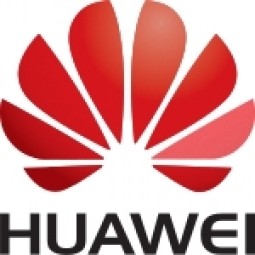
Applicable Industries
- Equipment & Machinery
The Customer
The Midea Group
About The Customer
The Midea Group is one of the largest white goods household appliance manufacturers and exporters in China. Midea Group has approximately 135,000 employees and more than 60 branches outside of China, selling products in more than 200 countries.
The Challenge
Midea's outdated IT infrastructure in some sites could no longer keep pace with company's growth, putting operational reliability at risk. The legacy data backup system could not backup at some production sites. Some sites were still using the x86 server’s local hard disks as the backup media, resulting in limited backup size. The existing backup system was inefficient.
The Solution
Huawei’s solution replaced the outdated servers at the three production sites with Huawei’s RH2288 V2 servers and used software to virtualize the servers to improve the utilization of server resources and simplify device Operation and Maintenance (O&M). Midea also deployed one Huawei VTL6900 with an all-in-one architecture and a maximum of 48 TB capacity as the backup media.
Software Components
- Symantec Backup Exec 2010 software
Software Components
- Symantec Backup Exec 2010 software
Operational Impact
Quantitative Benefit

Case Study missing?
Start adding your own!
Register with your work email and create a new case study profile for your business.
Related Case Studies.

Case Study
Smart Water Filtration Systems
Before working with Ayla Networks, Ozner was already using cloud connectivity to identify and solve water-filtration system malfunctions as well as to monitor filter cartridges for replacements.But, in June 2015, Ozner executives talked with Ayla about how the company might further improve its water systems with IoT technology. They liked what they heard from Ayla, but the executives needed to be sure that Ayla’s Agile IoT Platform provided the security and reliability Ozner required.

Case Study
IoT enabled Fleet Management with MindSphere
In view of growing competition, Gämmerler had a strong need to remain competitive via process optimization, reliability and gentle handling of printed products, even at highest press speeds. In addition, a digitalization initiative also included developing a key differentiation via data-driven services offers.

Case Study
Predictive Maintenance for Industrial Chillers
For global leaders in the industrial chiller manufacturing, reliability of the entire production process is of the utmost importance. Chillers are refrigeration systems that produce ice water to provide cooling for a process or industrial application. One of those leaders sought a way to respond to asset performance issues, even before they occur. The intelligence to guarantee maximum reliability of cooling devices is embedded (pre-alarming). A pre-alarming phase means that the cooling device still works, but symptoms may appear, telling manufacturers that a failure is likely to occur in the near future. Chillers who are not internet connected at that moment, provide little insight in this pre-alarming phase.

Case Study
Premium Appliance Producer Innovates with Internet of Everything
Sub-Zero faced the largest product launch in the company’s history:It wanted to launch 60 new products as scheduled while simultaneously opening a new “greenfield” production facility, yet still adhering to stringent quality requirements and manage issues from new supply-chain partners. A the same time, it wanted to increase staff productivity time and collaboration while reducing travel and costs.

Case Study
Integration of PLC with IoT for Bosch Rexroth
The application arises from the need to monitor and anticipate the problems of one or more machines managed by a PLC. These problems, often resulting from the accumulation over time of small discrepancies, require, when they occur, ex post technical operations maintenance.

Case Study
Data Gathering Solution for Joy Global
Joy Global's existing business processes required customers to work through an unstable legacy system to collect mass volumes of data. With inadequate processes and tools, field level analytics were not sufficient to properly inform business decisions.







